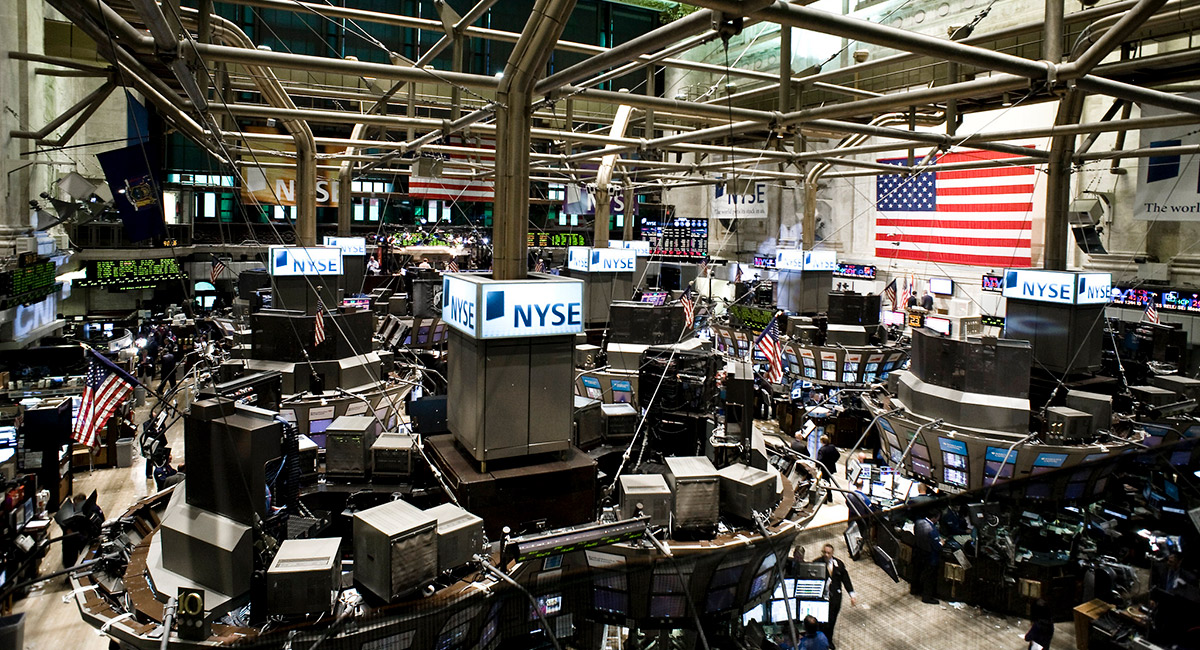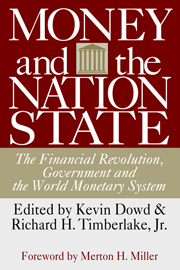Is the stock market over- or undervalued? Answering such a question seems hopelessly complicated. Equity-market strategists who answer this question for a living develop rough-and-ready answers by simplifying it. For many of them, the stock market is the S&P 500, and the value of the S&P 500 is found by the Gordon growth formula.
On Wall Street, multiples are the name of the game. The Gordon growth formula multiplies the forecasted earnings per share for all S&P 500 companies over the next twelve months by a factor. The factor, or multiple, is 1 / (r − g), where r is the expected rate of return on stocks and g is the expected growth rate of earnings. We can further decompose r into the risk-free interest rate (r0) plus the equity risk premium (rM). A strategist typically uses the ten-year Treasury yield as r0 and applies the growth adjustment to the equity risk premium, so that r − g is broken into r0 + (rM − g). So, for example, if the ten-year Treasury yield is 3 percent and the growth-adjusted equity risk premium is 2 percent, then r − g = 5 percent and the multiple is 1 / 0.05 = 20. Given that multiple, forward earnings of $200 per share would imply a level of 4,000 for the S&P 500.
Using consensus forecasts for S&P 500 earnings, the current level of the S&P 500 implies a multiple between 18 and 19, which puts r − g in the 5.3–5.5 percent range. The ten-year Treasury yield is hovering around 3.5 percent, implying an adjusted equity risk premium of 1.8–2 percent, well below the 3–3.5 percent average seen in the years preceding Covid. Everyone agrees that these are the basic facts.
Nobody agrees on the implications, however. On the one hand, you can argue that the stock market is wrong and the S&P 500 is overvalued. If the equity risk premium were in line with history, the correct multiple would be 1 / 0.07 = 14.3, which implies the market is overvalued by some 20 percent. People in the overvaluation camp say sell your stocks and put the proceeds into bonds or cash.
On the other hand, you can argue that the bond market is wrong. Here, “wrong” means the ten-year Treasury yield is temporarily elevated. Interest rates are high now, but the Fed will soon tame inflation and short-term rates will come down. As a result, 3 percent isn’t such a bad guess at where the ten-year Treasury yield will settle in the medium term, and the implied risk premium of 2.3–2.5 percent isn’t horrifying. People in this camp say hold on to your stocks and purchase some long-dated bonds to take advantage of falling rates.
Let’s unpack the view from the bond market some more. An easy way to think about the ten-year Treasury yield is to imagine rolling over short-term bonds for ten years and adding a smallish “term premium.” The yield on short-term bonds follows the Fed’s policy rate and can be decomposed into a real interest rate and an inflation rate. If you have paths in mind for real rates and inflation, the corresponding ten-year Treasury yield is basically a weighted average of their sum.
The Fed’s path for inflation is simple: Get to the 2 percent inflation target quickly and stay there. If we take it for granted that core inflation will fall from its current level of about 5 percent to 2 percent over the next year or two, we can expect short-term nominal interest rates to fall by about three percentage points over the same timeframe.
The harder part is the Fed’s path for the real interest rate, which is based on a mysterious, unobservable quantity r* (called “r-star”) or the real interest rate that exactly balances investment and potential output—a concept developed by the great Swedish economist Knut Wicksell. When the economy grows too fast or inflation heats up, the real rate is probably below r*. When the economy contracts or inflation drops suddenly, the real rate is probably above r*.
If the Fed sets real short-term rates at r*, it is neither in loosening nor tightening mode. If it sets it below r*, it is being accommodative; if it sets it above, it is tightening.
The road ahead for the stock market and the bond market depends in large part on where real interest rates are relative to r*. At the end of 2020, the Fed estimated r* was just below 0.5 percent for the United States and other advanced economies, but they have not made an estimate available since then. The “right” yield for the ten-year Treasury is the ten-year average of r* for the next ten years, plus 2 percent—whatever that might be.
If the current real interest rate is equal to r*, then the path of nominal short-term interest rates will follow the path of inflation reduction, falling by roughly three percentage points over the next year or two.
If real interest rates are still below r*, additional hikes in nominal rates will be needed, partially offsetting the downward momentum from declining inflation. Increased rates depress the earnings multiple for the market, suggesting the stock market is overvalued and the ten-year Treasury rate is headed above 3.5 percent. Under this scenario, many investors will reduce their holdings of stocks and increase their allocation to cash, short-term Treasuries, or other short-dated debt.
If real interest rates are above r*, however, the Fed can eventually pivot and reduce the policy rate. The ten-year Treasury rate could come down to 3 percent or below, meaning the stock market is fairly valued, or possibly undervalued.
Following the Silicon Valley Bank fiasco and the Federal Open Market Committee meeting, markets are anticipating a pause in further rate increases, but also reining in expectations for a future pivot to lower rates. These expectations suggest that r* is about 2 percent below the current ten-year yield, or 1.5 percent—a good deal higher than its average level from the Great Financial Crisis to Covid.
Any way you cut it, none of these macro views are particularly supportive for stocks right now. Just what would it take to be outright bullish on stocks? One important observation in this regard is the dramatic gap in valuation between the six largest stocks in the S&P 500—all technology companies—and the rest of the index. If you carve these large companies out of the S&P 500, the earnings multiple on the rest of the index is only 15.5, which implies r − g = 6.5 percent. This sits pretty well with the current ten-year Treasury yield (3.5 percent) and the historical growth-adjusted equity risk premium (3–3.5 percent). For certain industry sectors, valuations are even cheaper. There might also be positive earnings surprises relative to Wall Street’s consensus. Provided they can weather the gyrations of the search for r*along the way, active managers might have a day in the sun.











